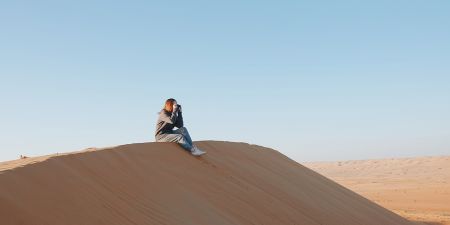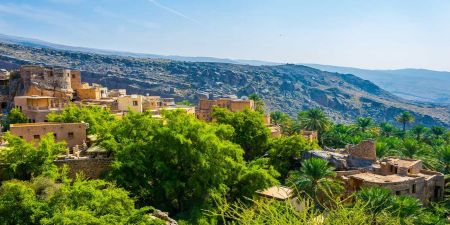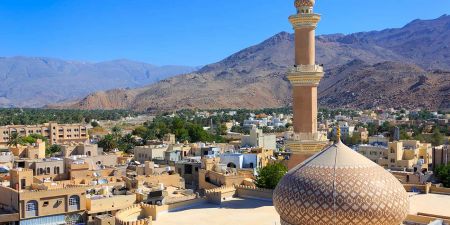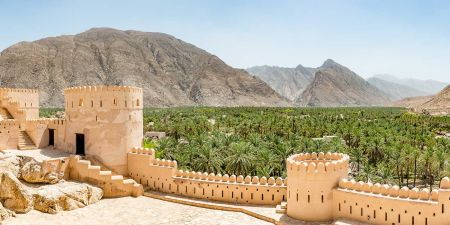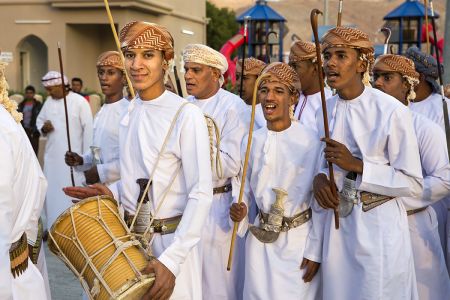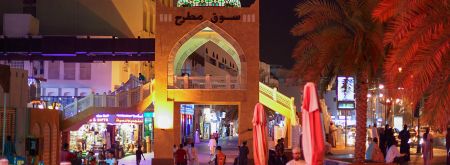Oman Information: Oman Facts
Oman has a strategic location overlooks the Arabian Sea, the Sea of Oman and the Arabian Gulf. It also controls the Strait of Hormuz, which is one of the most important facilities in the region, linking the Sea of Oman with the Arabian Gulf. The Strait of Hormuz is a gateway to all ships coming from the Indian Ocean and Arabian Sea.
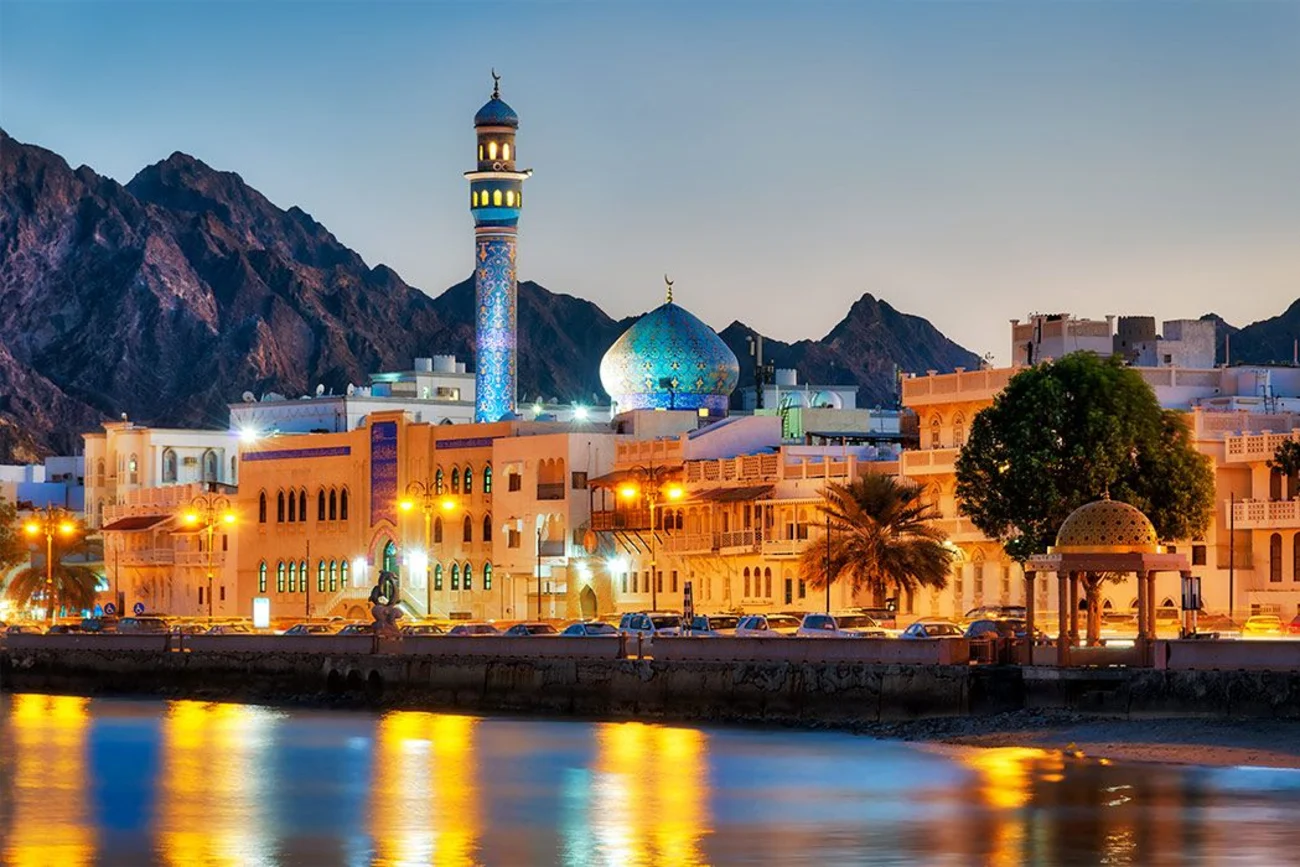
The Sultanate of Oman is a land of natural beauty, rich culture, and ancient traditions. Strategically located at the crossroads of East and West, Oman overlooks the Arabian Sea, the Sea of Oman, and the Arabian Gulf. It also controls the Strait of Hormuz, one of the world’s most important waterways linking the Arabian Gulf to the Indian Ocean.
Oman’s geographical position has given it historic importance as a center of trade and maritime activity for centuries. The Strait of Hormuz acts as a vital maritime passage for ships carrying goods and energy resources worldwide, reinforcing Oman’s global significance and influence in regional navigation and security.
Oman’s Cultural and Historical Significance
Oman’s culture is among the most vibrant in the Arabian Peninsula, deeply rooted in values of hospitality, courage, and wisdom. The country’s rich heritage reflects centuries of heroism and patriotism, forming a unique identity that harmonizes tradition with modernity. Omani culture stands out through its architecture, customs, and crafts, all of which tell stories of resilience and pride.
The Sultanate is the oldest Arab state on the Arabian Peninsula, with a history that dates back thousands of years. This long and proud history shapes Oman’s national character and provides insight into its diverse cultural experience. From the Bedouin traditions of the desert to the seafaring legacy of the coast, Oman’s past continues to inspire its people today.
Fast Oman Information
- Region: Middle East
- Continent: Asia
- Coastline: 3,165 km (1,967 mi)
- Borders: Saudi Arabia 676 km, UAE 410 km, Yemen 288 km
- Population: 4 Million
- Currency: Omani Rial (OMR)
- Capital: Muscat
Oman’s landscape stretches from the golden sands of the Rub’ al Khali Desert to the turquoise waters of the Arabian Sea. The combination of beaches, mountains, and historic towns makes it a destination of endless discovery. Experience the true essence of Oman through the expertise of Oman Travel Packages, your local travel partner for authentic adventures.
Location and Borders
Oman’s strategic location grants it an exceptional maritime position, overlooking the Arabian Sea, the Sea of Oman, and the Arabian Gulf. It serves as a vital link between Asia, Africa, and the Middle East, connecting the region’s key trade routes and seaports.
The Sultanate shares borders with the United Arab Emirates to the northwest, Saudi Arabia to the west, and Yemen to the southwest. Its long coastline of over 3,000 kilometers gives it abundant fishing, trade, and tourism opportunities. Oman’s maritime heritage remains an integral part of its identity and economy.
Customize Your Dream Vacation!
Get in touch with our local experts for an unforgettable journey.
Plan Your TripMuscat: The Capital of Oman
Muscat, the capital and largest city, lies on the Gulf of Oman in the country’s northeast. It blends ancient charm with modern sophistication, from traditional markets and forts to elegant buildings and boulevards. Muscat’s unique architecture showcases the balance between history and progress.
Visitors will find old souqs, traditional houses, and winding alleys side by side with modern shopping malls and hotels. The city has repeatedly won the Cleanest Arab City Award and is known for its hospitality and safety. Discover Muscat’s highlights with Oman Tours, your guide to the capital’s timeless beauty and modern culture.
Oman is a beautiful country in nature. If you prefer a small, friendly and welcoming country, Oman is your ideal destination, discover it through one of our Oman Tours
A Glance of History of Oman
With the spread of Islam and Mazin Bin Gadhubah joining Islam as the first person in Oman and his immigration to Medina to meet Prophet Mohammed, Peace be upon Him, the first mosque was built in Oman. This is Al Midhmar Mosque that still stands to this day in Wilayat Samail . These events paved the way for the two kings of Oman at that time, Jua’fer and Abd Ibni Al Jalandi, to enter Islam wholeheartedly and with utter conviction after receiving a letter from the Prophet, Peace be upon Him.
Also stated in the sermon our Master Abu Bakr Al-Sidiq, the caliph of the Prophet, Peace be upon Him, to the people of Oman: “People of Oman you, you have entered Islam voluntarily although the Prophet has not come to your land on foot or on horse. You have not opposed him as other Arabs opposed him, and you have not called for separation or dispersion. May God unite you in benevolence.”
With the election of Ibn Masood, the first imam, in 751 AD, the Imamate era began in Oman and lasted four centuries until 1154. Several attempts were made to restore the rule of the Imamate in Oman in the mid-fifteenth century, but did not succeed. During the period 1498-1507 AD, the Portuguese tried to control Oman. Omani history tells the story of the Omani people who expelled the Portuguese with their struggle and heroism. Nasser bin Murshid was elected Imam in 1624.
The Babylonians and the Assyrians settled in Oman because they wanted to control the trade route that linked Asia to the shores of the Mediterranean Sea.
Religion in Oman
Islam is the main religion in Oman, with most citizens following the Ibadi branch, known for tolerance and moderation. The country is also home to expatriates practicing Hinduism, Christianity, and other faiths, reflecting Oman’s welcoming and inclusive society.
Oman is a land of contrasts, from the majestic Hajar Mountains and serene wadis to golden deserts and turquoise coastlines. Whether you’re seeking adventure, relaxation, or cultural immersion, Oman offers it all in one breathtaking destination.
Plan your unforgettable journey with Oman Tours. Our local experts will customize your itinerary, arrange comfortable transfers, and guide you through Oman’s best-kept secrets. Discover the Sultanate’s beauty, heritage, and warmth like never before!

